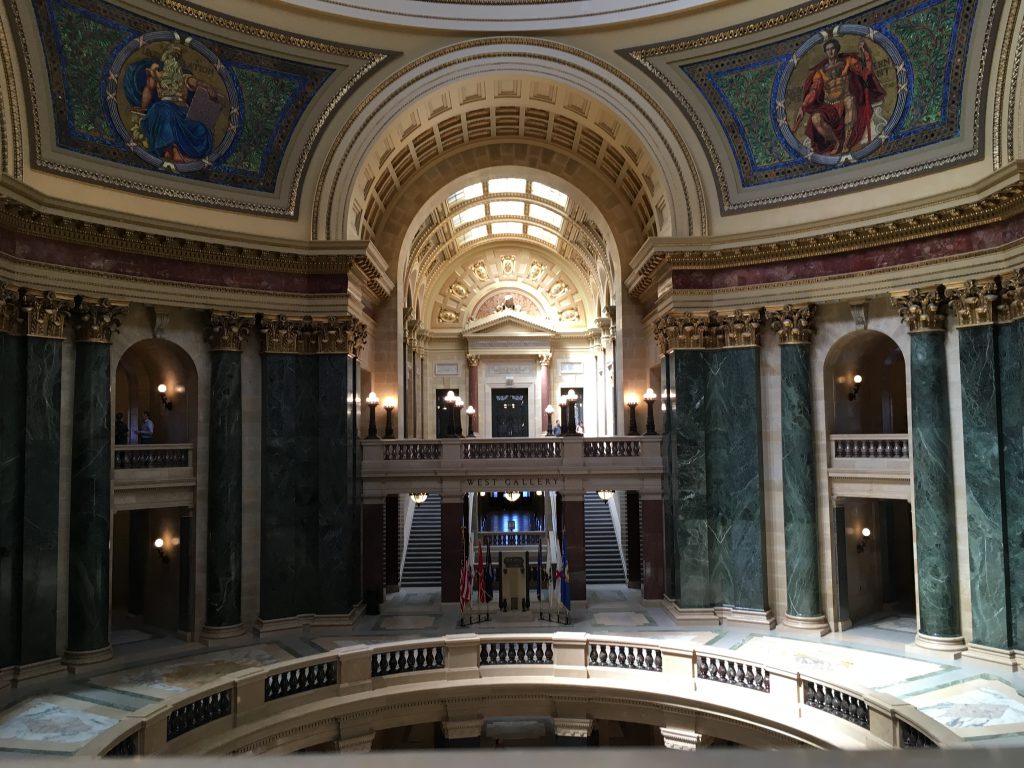Wisconsin Governments Getting $19.9 Billion In Federal Aid
New report warns: how state and local governments spend it could create later 'fiscal cliff.'
Thanks, Wisconsin Policy Forum for a flagrant act of research: Federal pandemic economic stimulus aid approved so far will total a stunning $19.9 billion to state and local governments and schools over the next few years.
The Policy Forum scored federal aid to state government at $5.2 billion; aid to all levels of education, $3.7 billion; unemployment benefits, $4 billion; aid to local governments, $3.5 billion, and child-care payments, $800 million. Federal funding is also paying more of Medicaid health care costs for the elderly, poor and disabled.
The $19.9 billion doesn’t include direct aid to individuals – those stimulus payments you’ve already spent, for example.
Why the $19.9 billion is a historic number:
-It’s more than the $17.5 billion state government collected in all general-fund taxes last year. That included all personal income taxes ($8.7 billion), sales taxes ($5.8 billion) and corporate income taxes ($1.6 billion) paid last year.
-It’s more than twice the $9.1 billion the Policy Forum said the Legislative Audit Bureau reported state government got and spent after the Great Depression, which began in 2008. Much of that aid went to pay for recurring K-12 schools and heath-care costs.
-The Federal Reserve estimated Wisconsin’s 2020 total gross domestic product at $294.1 billion last year, so pandemic aid from Washington will equal almost 7% of all goods and services. The Reserve noted that Wisconsin’s GDP fell 4% last year.
-The pandemic aid equals 21% of the $92.9-billion two-year budget Gov. Tony Evers recommended in February. Republicans say the 9% spending increase in the Democrat’s budget is much too high and the budget they hope to start voting on this week will spend much less.
Evers “wants to overspend by nearly $1.7 billion dollars in the next two years,” Senate President Chris Kapenga, of Delafield, said last week. “The Republican Legislature is going to budget like normal people do. We first want to do what government is supposed to do well, and then, don’t spend on unnecessary items.”
The $19.9 billion from Washington is short-term good news for state and local governments, and school districts, but also poses major challenges.
Few new programs that governments at any level start ever end, since residents begin relying on them.
Todd Berry, who followed state and local government spending trends for decades as president of the Wisconsin Taxpayer Alliance (WTA), calls this the “flypaper effect” — which holds that any federal money – even if one-time – “sticks to local budgets, accelerates state and local spending, and in the long run increases Wisconsin’s tax burden,” as he put it.
Berry is now retired and the WTA merged with Milwaukee-based Public Policy Forum in 2018, creating the Wisconsin Policy Forum.
The Policy Forum report put the dilemma more diplomatically. “In using these one-time revenues, state and local policymakers may wish to focus on needed one-time or emergency spending on items such as public health and economic relief, addressing student learning loss, capital projects and technology purchases, and debt payments, if allowed,” the Forum wrote, adding this warning:
“Spending it on new ongoing programs or local tax cuts could create an unsustainable ‘fiscal cliff’ once the federal funds are exhausted, particularly if state and local economies and tax revenues lag.”
Asked about that warning, Policy Forum Research Director Jason Stein said: “What we are basically saying is that this time we will not necessarily see the same problems that we did in 2011” with how federal aid after the Great Recession was spent.
“There are reasons to think it could go differently,” Stein added. “But it makes sense to at least reflect on that past experience and think about how we might try to maximize the positives and avoid the problems.”
Steven Walters has been covering the Capitol since 1988. Contact him at stevenscotwalters@gmail.com
If you think stories like this are important, become a member of Urban Milwaukee and help support real, independent journalism. Plus you get some cool added benefits.
The State of Politics
-
RNC Brings Fame to Gen Z Party Leader
 Jul 15th, 2024 by Steven Walters
Jul 15th, 2024 by Steven Walters
-
Wisconsin’s Republican Roots Run Deep
 Jul 8th, 2024 by Steven Walters
Jul 8th, 2024 by Steven Walters
-
Feuding Supreme Court Justices Need a Break
 Jul 1st, 2024 by Steven Walters
Jul 1st, 2024 by Steven Walters






















